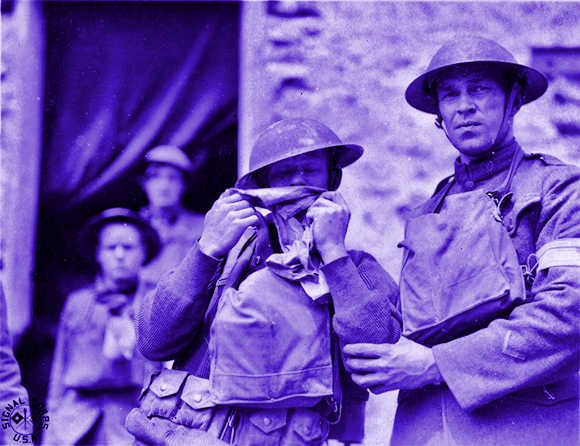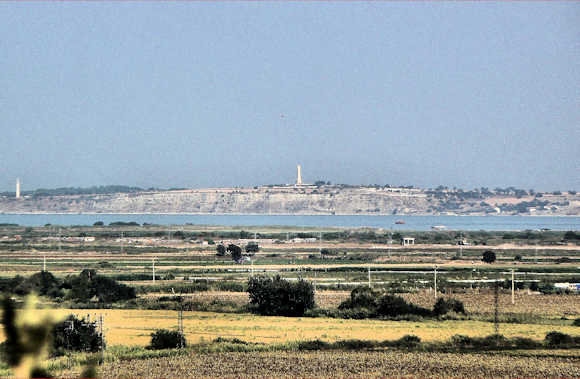 |
| American Troops with German Prisoners George Harding |
By Gary Sheffield
One World Publications, 2014
Squadron Leader Paul Withers, RAF, Reviewer
Originally Presented in Air Power Review, 2023
In addition to [2024] being a year of commemoration, the centenary of the outbreak of the Great War has provided an opportunity to revisit the origins of the conflict, the way it was fought and its broader impact on the 20th century. Undoubtedly, many new books will be released between now and 2018, but A Short History of the First World War provides an excellent broad overview that, despite its relative brevity, includes a great deal of insightful analysis.
Gary Sheffield is Professor of War Studies at the University of Wolverhampton and has previously worked at the University of Birmingham and the Joint Services Command and Staff College. He is an acknowledged expert on the First World War, having written widely on the subject, and is one of a small number of revisionist historians who have helped debunk the popular myths about the conflict. His short history tackles an enormous subject, and his stated aim is to give the reader an "understanding of not only what happened in 1914-18 but how and why" (p.xiii).
Sheffield’s analysis is set out in broadly chronological order with significant consideration given to the wider global conflict, expanding the aperture beyond the war fought in the trenches of Flanders and France. He starts with a balanced argument on the causation of the war, analyzing the international system and the roles of "nationalism," "imperialism," and "militarism" in bringing the world to the brink of conflict. He unpicks a range of arguments but ultimately concludes that the blame lay at the door of "the leaders of two aggressor states" Austria-Hungary and Germany (p.27).
The bulk of the volume focuses on the conduct of the war itself. He examines how the initial large-scale, rapid mobile battle on the Western Front aimed at achieving a quick and decisive German victory soon bogged down into the stalemate of trench warfare that was to last for almost the entire war. On the Eastern Front, France’s key ally Russia suffered a massive defeat at the hands of the Germans during the Battle of Tannenberg, while during the same period, in the late summer of 1914, the Russians inflicted 300,000 casualties on Austria (pp. 40-41). This breadth of outlook gives the reader the true context of the war. The losses on the Western Front were horrifically large during the various set-piece battles, but study of the broader conflict highlights its scale beyond northwest Europe. As Sheffield develops his study into 1915, in addition to the Western and Eastern Fronts, he examines the Turkish Front, particularly the Dardenelles campaign, and looks at some of the lesser-known parts of the war in Italy, Serbia, and Salonika. He provides an interesting analysis of the general strategy of attrition. While the received wisdom is that it was ineffective and profligate, Sheffield reviews the evidence and suggests that in fact "controlled attrition" is a viable strategy and that "such attrition was costly in human life but ultimately effective" (p. 54).
The year 1916 saw some of the battles that typify the general understanding of the conflict, Verdun and the Somme, but also the most significant naval battle of the war, Jutland. With more than 250 ships involved, this battle ensured that the German Grand Fleet returned to port for the remainder of the war. However, victory came at the cost of the Royal Navy absorbing significantly greater losses in terms of tonnage than did the Germans. Sheffield goes on to examine the "Year of Strain: 1917," including Vimy Ridge and Passchendaele, as well as the first large-scale tank battle at Cambrai. He also considers the cumulative effect of trench warfare and the impact of widespread mutinies within the French Army. The examination of the actual conflict concludes with the decisive year of 1918, leading up to the Armistice.
Throughout the book, the author intersperses the main argument with more detailed examination of topics such as the international system, biographical information on the key commanders, the revolution in military affairs, morale and discipline, and the U-boat war. Of specific interest to the air power audience, he includes sections on "The Beginnings of War in the Air," "The Air War Intensifies," and "The Air War Away from the Western Front."
The third part of A Short History of the First World War deals with total war and the broader impact on the societies of the belligerents. Sheffield considers total war to be one where all the resources of a state—human, economic, and technological—are devoted to waging war (p. 128). Beyond mass mobiliaation, he considers the impact of the industrialization of warfare and the establishment of "total war economies." In considering the wider impacts, he examines the implications for Irish independence and the triggers for the Russian Revolution.
 |
| Order This Work HERE |
The book ends with an epilogue that firmly establishes the implications of the First World War for the remainder of the century. He challenges the common assumption that the punitive nature of the Versailles Treaty inevitably led to the Second World War, arguing that the world "economic crisis fatally undermined the Weimar Republic" (p. 175). He also considers two of the legacies of the Great War that still shape modern conflict—the Sykes-Picot agreement and the Balfour Declaration.
At a mere 239 pages, Sheffield tackles a massive subject in an extremely readable and engaging style. The fact that it is so wide-ranging inevitably means that it lacks depth in some areas, and some aspects of the war necessarily did not make it into the book. However, the "big-and-small map" approach is more than compensated for by Sheffield’s insightful analysis. This book should whet the reader’s appetite to study the Great War in more depth. Sheffield offers a section on further reading tht reviews some of the best literature on the subject. Of these, I would particularly recommend Sheffield’s Forgotten Victory: The First World War: Myths and Realities (Headline, 2001). For an excellent study on one of the Great War’s iconic of battles, the Somme, read William Philpott’s Bloody Victory: The Sacrifice on the Somme and the Making of the Twentieth Century (Little, Brown, 2009).
In this short introduction, Sheffield provides the reader with insight into to the global nature of the conflict and examines its prosecution across the land, sea, and air domains. For the air power audience, it establishes the context that led to air power emerging as both an independent and an integrated form of warfare. It is highly recommended as a primer for those looking for a broad scholarly overview of the conflict but also acts as a very useful general reference. A Short History of the First World War sets a basis for any study of modern warfare in giving the reader an understanding of the transformative effect that the Great War had on the 20th century and beyond.
Paul Withers



























